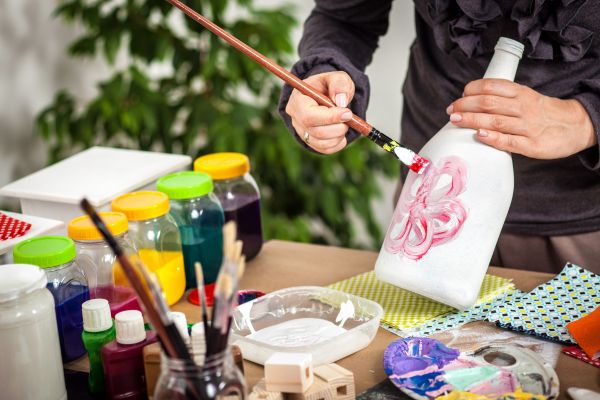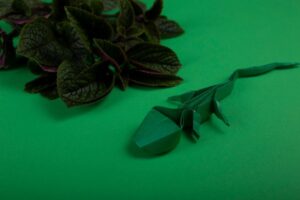Decoupage is a captivating art form that allows you to transform ordinary objects into extraordinary works of art. Derived from the French word “decouper,” meaning “to cut out,” decoupage involves the meticulous process of decorating surfaces with carefully cut and layered paper. This centuries-old technique has stood the test of time, captivating artists and crafters with its ability to breathe new life into everyday items and unleash boundless creativity.
In the art of decoupage, the possibilities are endless. Whether you’re a seasoned artist or a beginner seeking to explore your artistic side, mastering the techniques of decoupage will open doors to a world of creative expression. From creating stunning home decor pieces to reviving old furniture, decoupage allows you to infuse beauty, personality, and your unique artistic vision into each project.
This article will serve as your guide to mastering the art of decoupage, providing you with five essential techniques that will elevate your skills and help you create captivating decoupage creations. By mastering these techniques, you will acquire the confidence and expertise to embark on a decoupage journey filled with endless possibilities.
Throughout this article, we will delve into the key steps and considerations involved in decoupage, including choosing the right materials, preparing the surface, applying the decoupage paper, sealing and finishing, and adding those final touches that make your creations truly extraordinary. Each technique will be explored in detail, providing you with valuable insights and practical tips to enhance your decoupage skills.
As you embark on this creative adventure, remember that decoupage is not merely about adhering pieces of paper to surfaces. It is about storytelling, self-expression, and the art of transforming ordinary objects into personal works of art. With each project, you have the opportunity to convey your emotions, capture memories, and create something truly meaningful.
Whether you’re drawn to vibrant colors, intricate patterns, or subtle elegance, decoupage allows you to explore your artistic voice and experiment with various styles and themes. From classic and vintage-inspired designs to modern and eclectic aesthetics, the world of decoupage is as diverse as your imagination.
So, gather your materials, sharpen your scissors, and prepare to embark on a journey of artistic exploration. With dedication, practice, and an open mind, you will master the art of decoupage and unlock the potential to create stunning, personalized pieces that reflect your unique style and artistic vision.
Get ready to breathe life into ordinary objects, to transform surfaces with carefully chosen papers, and to immerse yourself in the joy of creation. The art of decoupage is waiting for you, and with the techniques shared in this article, you will have the tools to become a master of this timeless art form. Let your creativity soar, embrace the beauty of decoupage, and discover the boundless possibilities that await you on this artistic journey.
1: Choosing the Right Materials
When it comes to decoupage, selecting the right materials is crucial. Begin by choosing a base object or surface that is suitable for decoupage, such as wood, glass, or ceramics. Ensure that the surface is clean, smooth, and free from any dirt or debris.
Next, focus on selecting high-quality decoupage papers or napkins with appealing designs. Look for papers specifically made for decoupage, as they are thin and pliable, making them easier to work with. Experiment with different patterns, colors, and textures to add depth and visual interest to your projects.
In addition to papers, consider incorporating other elements such as ribbons, lace, or ephemera to enhance your decoupage pieces. These additional materials can add a touch of uniqueness and creativity to your designs.
Lastly, gather the necessary tools, including decoupage glue or medium, a soft-bristle brush for applying the glue, scissors or craft knife for cutting out designs, and a brayer or a bone folder for smoothing out any wrinkles or air bubbles.
2: Preparing the Surface
Before applying the decoupage paper, it’s essential to prepare the surface of your chosen object. This step ensures a smooth and flawless finish. Begin by cleaning the surface thoroughly, removing any dust, dirt, or grease.
If the surface is porous, applying a base coat of paint or primer is recommended. This helps create a smoother surface and prevents the paper from absorbing too much glue, which can cause wrinkles or bubbles.
For glass or smooth surfaces, consider applying a thin layer of white acrylic paint as a base. This provides better opacity and prevents the background color from showing through the decoupage paper.
Allow the base coat or paint to dry completely before proceeding to the next step. Patience is key to achieving a professional-looking decoupage finish.
3: Applying the Decoupage Paper
Now comes the exciting part—applying the decoupage paper to the prepared surface. Begin by cutting out the desired designs from your chosen decoupage papers or napkins. Take your time and ensure clean and precise cuts.
Apply a thin and even layer of decoupage glue or medium to the back of the paper and carefully position it onto the surface. Smooth out any wrinkles or air bubbles using a brayer or a bone folder, working from the center outward.
Continue applying the paper pieces, overlapping them slightly if desired, until you achieve the desired composition. Take care not to overload the surface with glue, as it can cause the paper to become saturated and wrinkle.
Once all the pieces are in place, allow the decoupage glue to dry completely. This may take several hours or overnight, depending on the brand and thickness of the glue.
4: Sealing and Finishing
To protect your decoupage work and give it a professional finish, it’s crucial to seal the surface. Apply a layer of decoupage glue or varnish over the entire surface, ensuring even coverage.
Allow the sealant to dry completely between coats, following the manufacturer’s instructions. Multiple coats may be necessary to achieve the desired level of protection and durability.
If desired, you can also sand the surface lightly between coats for a smoother finish. Be sure to remove any sanding dust before applying additional layers of sealant.
Consider using a glossy or matte sealant based on your personal preference and the desired effect of your project. A glossy finish provides a shiny and vibrant look, while a matte finish offers a more subtle and subdued appearance.
5: Adding Finishing Touches
The final step in mastering the art of decoupage is adding finishing touches to your project. This is where your creativity can truly shine.
Consider embellishing your decoupage piece with additional elements such as beads, sequins, or glitter to add texture and sparkle. You can also enhance the design with hand-painted details or decorative borders using acrylic paints or markers.
Don’t forget to personalize your decoupage project by adding your signature or initials to make it truly your own.
Once you’re satisfied with the final result, allow the piece to dry and cure completely before displaying or using it.
Conclusion
Decoupage is a captivating art form that allows you to unleash your creativity and transform ordinary objects into extraordinary works of art. Throughout this article, we have explored five essential techniques that will guide you on your journey to mastering the art of decoupage. By choosing the right materials, preparing the surface, applying the decoupage paper, sealing and finishing, and adding those final finishing touches, you have all the tools you need to create stunning decoupage projects that reflect your unique style and artistic vision.
Decoupage offers a world of endless possibilities. You can transform simple household items into personalized gifts, breathe new life into worn-out furniture, or create beautiful home decor pieces that showcase your talent. The art of decoupage allows you to combine colors, patterns, and textures in a way that is limited only by your imagination. It is a form of artistic expression that invites you to experiment, explore, and push the boundaries of your creativity.
As you embark on your decoupage journey, remember that practice makes perfect. Don’t be discouraged if your early projects don’t turn out exactly as you envisioned. With each project, you will gain experience, learn from your mistakes, and refine your skills. Embrace the learning process and allow yourself the freedom to experiment with different techniques, materials, and designs. Each new project is an opportunity to grow as an artist and discover new possibilities within the art of decoupage.
Furthermore, don’t be afraid to seek inspiration from various sources. Explore decoupage communities, books, magazines, and online platforms to discover the work of other talented artists. Engage in conversations and share your knowledge with fellow enthusiasts. The decoupage community is a supportive and welcoming one, filled with individuals who share your passion for this beautiful art form.
Ultimately, the art of decoupage is a journey of self-expression and creativity. It allows you to infuse your personality, emotions, and individual style into your creations. Whether you create decoupage pieces as a hobby, a form of relaxation, or a means of artistic expression, embrace the joy that comes from working with your hands and transforming ordinary objects into extraordinary works of art.
So, gather your materials, let your imagination run wild, and dive into the world of decoupage. With dedication, practice, and a touch of creativity, you’ll master the art of decoupage and create beautiful, one-of-a-kind pieces that will captivate and inspire others. Enjoy the process, embrace the journey, and let the art of decoupage guide you to new heights of artistic fulfillment.



